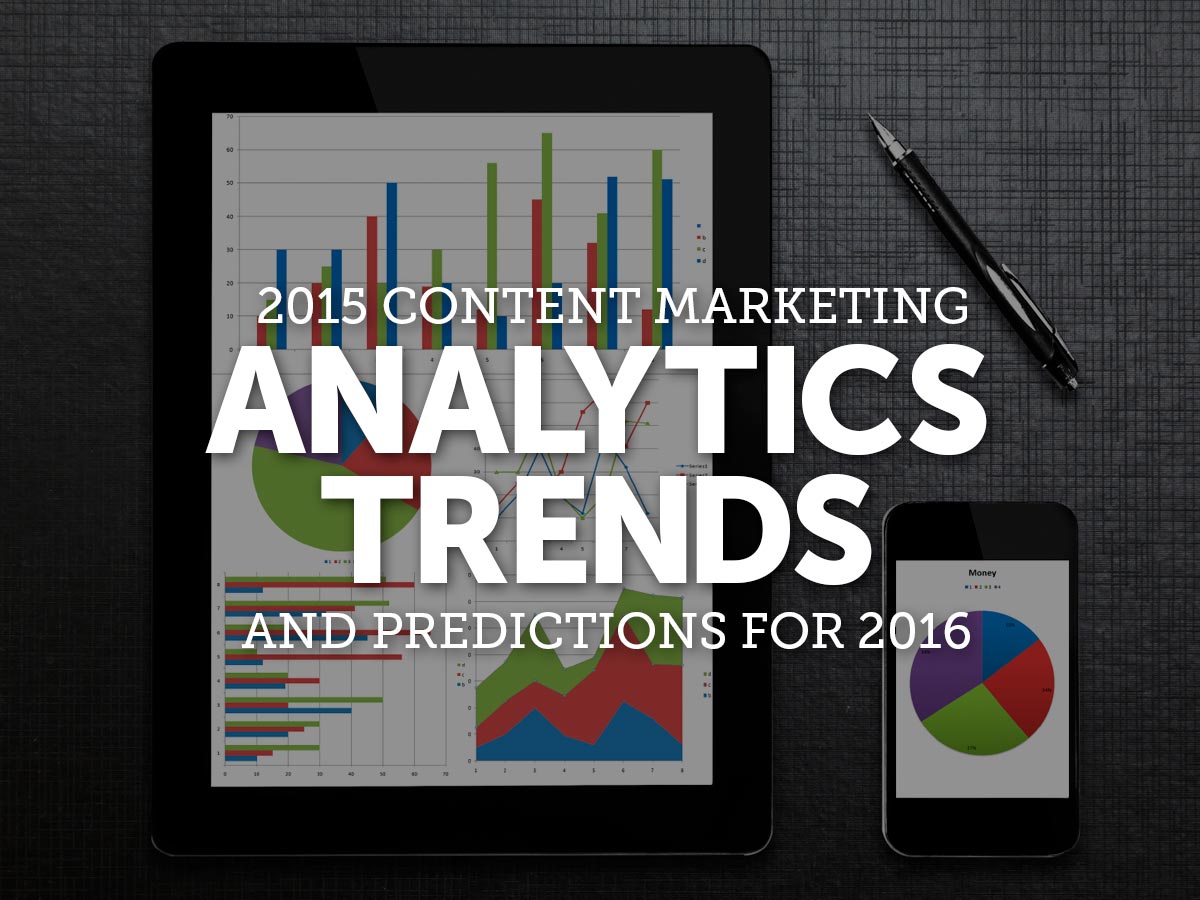The world of web analytics and optimization is constantly changing, and unless you’re a seasoned analytics professional it can be hard to keep up. Pace has the philosophy that it’s just as important to tell stories with data as it is to create high-quality content. Lucky for Pace, we have a group of specialists led by one of the best web analytics guys out there. Dan Sarkar has been with Pace for one and a half years and heads up our in-house analytics team. I sat down with Dan to ask him a few questions about optimization and analytics trends he’s seen to date in 2015, his predictions for Q4 and what he thinks we’ll see in this space next year:
Can you share some noteworthy analytics and optimization trends you’ve seen over the last three quarters of 2015?
It’s been proven that people will convert 10x better if shown personalized ads, and that 56% of online shoppers are more likely to shop on a site that provides personalized recommendations. This is also true for sites that offer a personalized content experience. Over the past three quarters, there has been a tremendous focus toward personalization and content that support personalizing efforts in terms of the customer journey and best-in-class experience. Over the past year, more and more content management systems have brought in additional technologies that allow them to test and improve their personalization capabilities.
In terms of personalization, there are two types that have become increasingly important this year:
Prescriptive Personalization
This form is rule-based and features explicit personalization (a visitors’ profile determines the content they will see) and implicit personalization (how visitors navigate a website is monitored and tracked, and content is presented based on business logic that interprets their clicking pattern into the most appropriate delivery of content). These personalization mechanisms are traditionally designed based on business rules; visitors are often broken down into segments, and this type of personalization is a form of segmentation.
Adaptive Personalization
This type of content personalization is in its infancy stage and is likely to develop more in the future. Adaptive personalization focuses on predicting the content and experience a visitor is looking for before and during an interaction. Rather than defining segments and then applying a set of business rules, adaptive personalization continually applies an evolving self-managed set of rule-based features. An example of adaptive personalization would be an online newsroom, where content is displayed based on a self-evolving and managed set of rules (where prediction and forecast will take place in real-time with precision).
Understanding the Importance of Testing
Another trend we’ve seen over the past three quarters that will likely continue into 2016 is the focus on “measure, test, analyze, rinse and repeat.” Companies understand that optimizing websites and conversion is equally as important as optimizing their advertisements. In addition, we’ve seen a lot more A/B testing this year, but specifically A/B testing in terms of different mobile experiences. Cross-platform testing is another trend that will likely continue into the new year.
Video Marketing
A third and very interesting trend we’ve seen in 2015 is a heightened emphasis on videos and video marketing. This type of supporting content can help increase the quality and visibility of products, improve a brand’s credibility, help them show more personality and engage with their consumers. Because of this, the use of video in brand storytelling—when done correctly—can aid in increasing conversion rate.
Optimized Home Perspective
In 2015, marketers and data analysts began focusing more on the idea of an “optimized home perspective.” The lines between home, work life and consumer purchasing habits are becoming increasingly blurry. The demand for mobile home-based apps suggests there is a market for this, and it is simply a matter of making it essential—a transition that will occur purely by improved experience design. We’ll see this evolve more in 2016, and content will continue to play a moderating impact in this evolution.
What are your predictions for analytics and optimization for Q4?
I see four trends taking a front seat:
Greater Emphasis on Analyzing Millennial Shopping Behavior
Millennials have a huge amount of purchasing power, and as we move into the holiday season it will be even more important to analyze their shopping behavior and create targeted content that will engage them. In addition, having an omni-channel view is important, because as we all know not all millennials are the same.
Social Media Increasingly Used as a Discovery Tool
Throughout the holiday season we will see social media continuously being used as a product discovery tool. Understanding how consumers discover products through social media and whether their discovery leads to a conversion will be critical for brands this holiday season. In addition, the social media content that pushes product awareness will increasingly be visual.
More Importance Placed on Digital Data Security
Consumers and companies will become even more aware and savvy in terms of digital data security. Building and maintaining consumer trust as we move into an era of a cross platform, fully integrated experience will help businesses stand out from the competition and show customers whom to trust when it comes to security.
Increased Emphasis on Understanding Multi-Channel Attribution
As more marketers lean toward multi-channel attribution, visitors will use social media and mobile phones to explore products, but are likely to purchase using desktop computers. Understanding the cross platform customer journey will be essential in Q4 and into the new year.
What do you think we will see for 2016?
We will see four major things in 2016:
The first is that real-time analytics and data visualization are likely to become more mainstream. There are four different types of analytics: descriptive, diagnostics, predictive and prescriptive, or cognitive, which has evolved significantly this year. Some of these are not real-time, but in 2016 there will be a discernible shift to making these more real-time. Because of this, we’ll see more data dashboards reporting analytics in real time, which will give the data a “live” newsroom-type feel.
The second is that decision-making will be informed by more real-time data collection. New data sources and platforms will continue to emerge.
The third will be the infusion of advanced analytics capabilities for accelerated impact. Companies will be using more predictive analytics and prescriptive analytics to help make business decisions. With the continuous shift to mobile, data analytics will become even more focused on mobile and analyzing mobile use and changes in behavior.
And finally, with access to large amounts of information, data and analytics, we will likely see that a) companies are competing in terms of consumption rather than creation of analytics, and b) incremental innovation in the field of technology rather than disruptive innovation.



